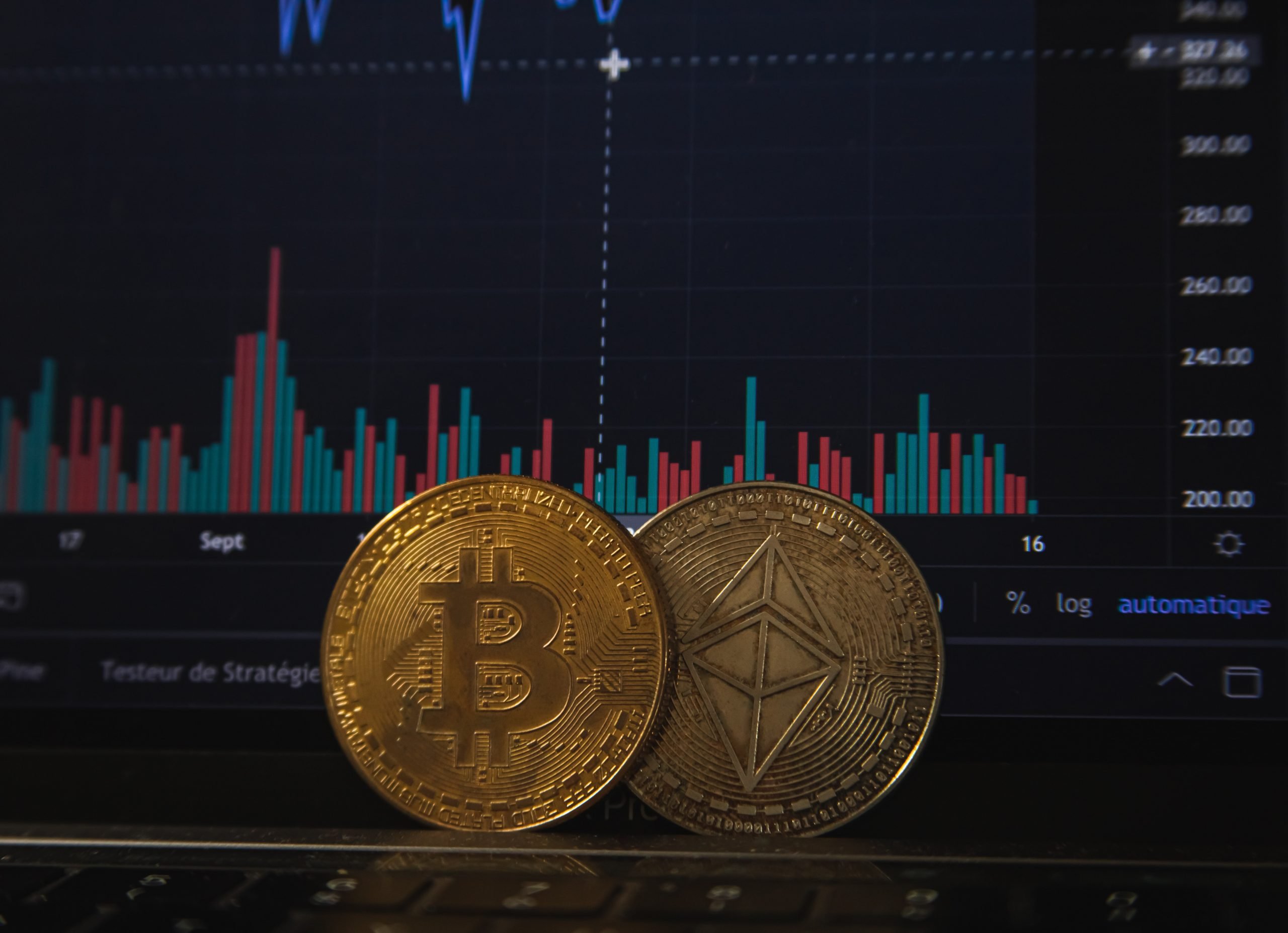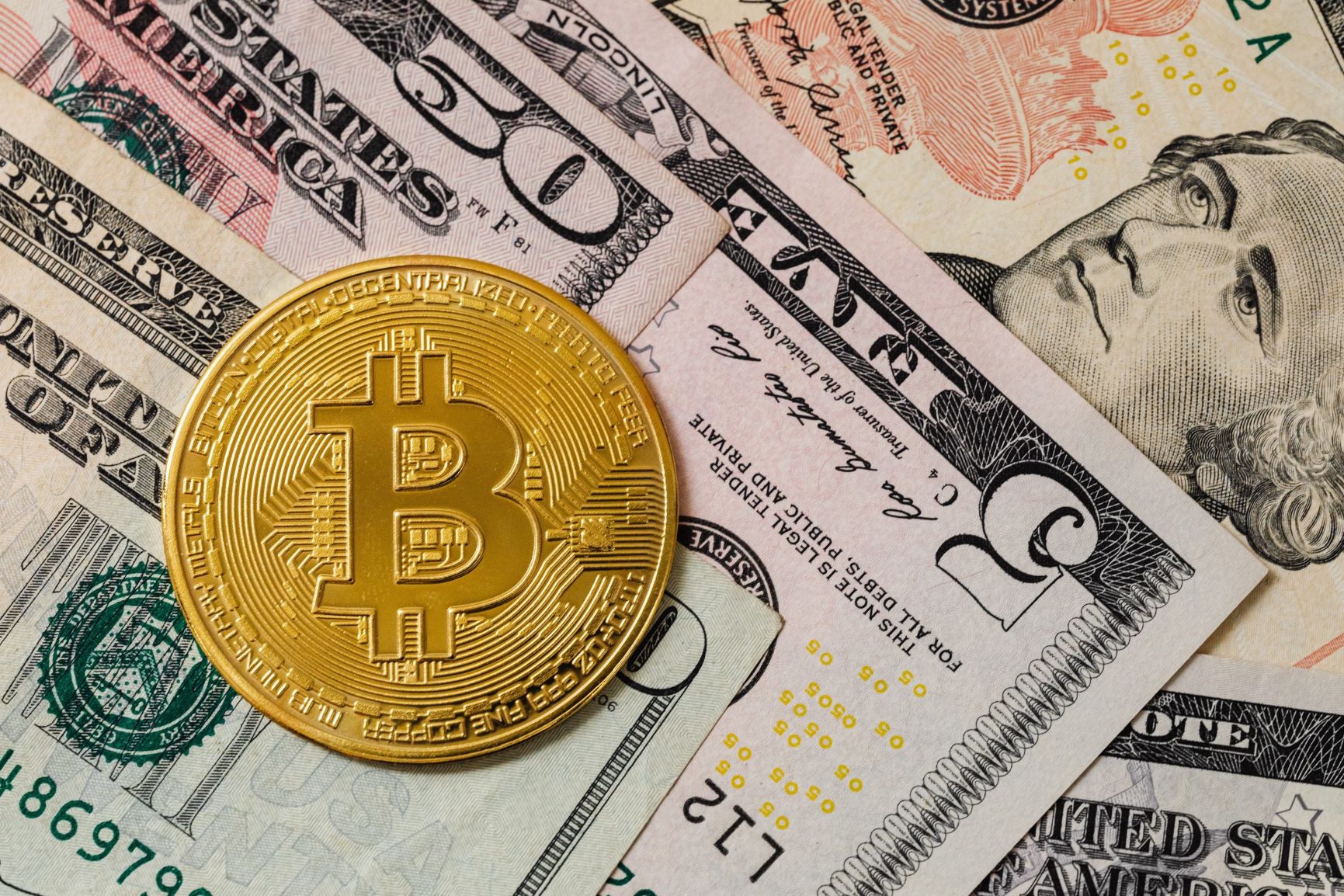Current Financial Services
Have you ever been charged for financial services: record keeping fee, ATM fee, overdraft fee, excess transaction fee, or account closing fee? It is expensive to have your money in bank accounts, and most Canadian banks give you an average interest rate of 0.100% on your deposits. With the 2008 financial crisis, individuals lost faith in the traditional financial system. People wanted a new way of dealing with money away from the existing financial services, government control and away from the middlemen; the perfect environment for decentralized finance to create disruption. This trend gave rise to decentralized finance (DeFi). We are going to take a look at what is DeFi, DeFi and Ethereum, DeFi usages, DeFi vs traditional finance, and DeFi challenges.
What is Decentralized Finance (DeFi): Current Analysis
Decentralized Finance (DeFi) market capitalization is around $53.17 billion USD as of April 12th of 2021 (DEFI Pulse). In December 2019, the DeFi industry was valued at $700 million USD, and within a year, it was valued at $12 billion dollars. Brian Brooks, who is acting comptroller of the currency of the United States Treasury’s Office, said that “decentralization is transforming how we consume services and how banks operate. (As for 2021) many of the greatest financial benefits and advancements are still ahead.”

DeFi and Ethereum
Ethereum is preferred by a number of developers because of its ease of deployment. However, Ethereum has a high transaction fee. As of April 10th, 2021, the average transaction fee is 19 US dollars. Ethereum has congestion problems, and Ethereum 2.0 upgrade is on the way with phase 0 that went live in December of 2020. There will be different ship dates for each phase that would be leading to the final upgrade. The major feature of Ethereum 2.0 is moving away from Proof of Work and introducing sharding. Proof of Stake is much more secure and energy-efficient to maintain the network. In addition, Ethereum will be split into multiple shards that can operate at the same time, which improves the speed of the transactions. There is an expectation that the transaction cost will decrease with the upgrade. Learn more about the DeFi king here.
DeFi Usage
DeFi is a general term to describe vastly different business models. Being a new buzzword for cryptocurrency, many businesses have tagged themselves as DeFi to follow the trend. Let’s take a look at each business model for decentralized finance (DeFi).
DeFi Lending and Borrowing through Smart Contracts
Users send their assets that they would like to lend as tokens through smart contracts, which then issues interest in the native coins. A smart contract acts as an encrypted and automated agreement between lenders and borrowers, and it is stored in a DeFi blockchain space. In DeFi, smart contracts replace middlemen such as banks so that everyone has access to the public ledger, blockchain. For example, in the DeFi application Compound that runs on Ethereum, a lender deposits their assets, and this creates a pool (value locked) where borrowers can issue loans. The lenders need to guarantee that they have more cryptocurrencies to cover the loan from the pool (value locked). Then, the lender can borrow from the pool. The “collateral factor” of the cryptocurrency affects how much a lender can borrow. For instance, ETH with the collateral factor of 75% on decentralized finance (DeFi) lending platform Compound allows the lenders to take up to 75% of the loan of their supplied cryptocurrency. cTokens are used as a means to mint, redeem, borrow, repay a borrow, or liquidate a borrow on Compound.
Decentralized Exchanges (DEX)
Decentralized Exchanges, otherwise abbreviated as DEX, are cryptocurrency exchanges where individuals can execute cryptocurrency transactions without middlemen, such as banks or stockbrokers. Uniswap is an example of a DEX DeFi application built on Ethereum. Based on the Automated Market Maker (AMM) model, the liquidity providers deposit two tokens to the liquidity pool. The traders pay a fee to the pool that is then paid to the liquidity providers according to their contribution to the pool. Uniswap does not earn profit from the traders; the transaction fee paid out to the liquidity providers (0.3%) goes back to the pool. In the future, for Uniswap “to grow and improve,” they will charge a protocol fee of 0.05% that would affect the amount received by the liquidity providers.

DeFi Staking
Staking is keeping the coins in a specially designated crypto wallet or node for the purpose of guarding the security of the blockchain network. Proof of Stake chains create and approve new blocks through staking. Coins are randomly chosen by the protocol to create a block while kept in a wallet by a validator. Users with a larger amount in the wallet have a higher chance of being chosen as the next block validator. Through staking, individuals can earn passive incomes. Some DeFi protocols work on the lottery system described above, while other protocols have set reward pools that are allocated on a pro-rated basis to all users who have staked.
DeFi Stablecoins
Stablecoins are crypto that peg their market value to a reserve asset. For example, a reserve asset can be the US dollar or gold. Stablecoins minimize the volatility of cryptocurrency. There is a high demand for stablecoin loans. This demand is due to institutional traders and cryptocurrency payment processors. Institutional traders use cryptocurrency for speculation, using the capital to increase their leverage on certain cryptocurrencies or to arbitrage trade between different exchanges. Cryptocurrency payment processors use the loans to reimburse businesses within a limited time frame. Genesis Global Trading (custodial cryptocurrency borrowing platform) grew by 100% in new loan origination in the first quarter 2020.
DeFi vs Traditional Finance
DeFi and traditional finance are different in four aspects:
- In DeFi, the financial system is performed on a public digital ledger called blockchain without middlemen through smart contracts. On the other hand, in traditional finance, financial functions are performed through centralized administration.
- Anyone can participate in DeFi due to low barriers to enter. Unlike traditional finance, DeFi is more open and transparent.
- DeFi is more democratic than traditional finance because senior management in traditional finance influence decisions.
- Due to the nature of blockchain technology, DeFi is self-reconciling, and it is generally seen as immutable through decentralization. Traditional finance still relies on people to perform reconciliation and is generally a far more costly endeavour. Blockchain technology creates significant cost savings when compared to traditional finance.

Problems & Challenges Explained
In 2014 the People’s Bank of China (PBoC) formed a group to “study digital currencies and application scenarios.” In 2017 PBoC opened the Digital Currency Research Institute. Based on China’s Intellectual Property Administration, the institute filed more than 63 patent applications related to blockchain and crypto in 2017. This signals the bank will execute regulatory repression on blockchain and crypto. As of March 2021, the Bank of Communications and China Construction Bank carried out digital yuan trials at two department stores in Shanghai (Cointelegraph). If China suppresses other blockchain and crypto and develops their own digital currency, the currency is no longer decentralized. Rather the currency is a means to support the central bank’s agenda.
George Orwell’s novel 1984 depicts totalitarianism and mass surveillance to repress any idea that goes against the party. To some extent, I view DeFi as Winston Smith who is the protagonist of the novel and the party as governance. Winston Smith tries to escape the surveillance but is captured and tortured to give in. This reverts Winston Smith to an obedient and unquestioning party member. If the government ever uses the data stored in cryptocurrency as a means of surveillance, individuals will be left with less privacy than if they had used traditional fiat currency instead.
Another problem is the security of the network. A protocol, bZx, was hacked twice in February 2021 via a contract that let the hacker execute a flash loan attack that costed around 1,200 ETH. DeFi through blockchain technology provides a greater value to users in terms of giving financial autonomy. In addition, DeFi also eliminates the needs for middlemen. It is possible that big financial institutions lobby against DeFi. Regardless of potential government abuse or lobbying efforts from the traditional financial industry, DeFi has shown us what could be a democratic financial institution. I am hopeful that DeFi is designed for providing financial inclusion, transparency, and security to empower individuals everywhere. “Decentralized finance is an unbundling of traditional finance,” says Rafael Cosman, CEO and co-founder of TrustToken. “Defi takes the key elements of the work done by banks, exchanges and insurers today -like lending, borrowing and trading-and puts it in the hands of regular people.”

About Author: Jiwon Angela Son is a writer at VirgoCX. She is a marketing professional who has sales, marketing, and advertising experience in innovation-driven industries for 12 years. Prior to working at VirgoCX, she was a marketer at global pharmaceutical companies such as Bristol Myers Squibb and Actelion Pharmaceuticals. Twitter
Disclaimer: No Investment Advice The contents of this article are for informational purposes only and are not intended as, and shall not be understood or construed as, investment advice, financial advice or trading advice. There are substantial risks associated with the trading of cryptocurrencies and you should consult with a licensed financial advisor prior to making any trading or investment decisions. Content Not Warranted The contents of this article are provided “as is” and without warranties of any kind. You bear all risks associated with the use of the content provided including without limitation, any reliance on the accuracy, completeness or usefulness of any content available within this article.
Follow us on social!


